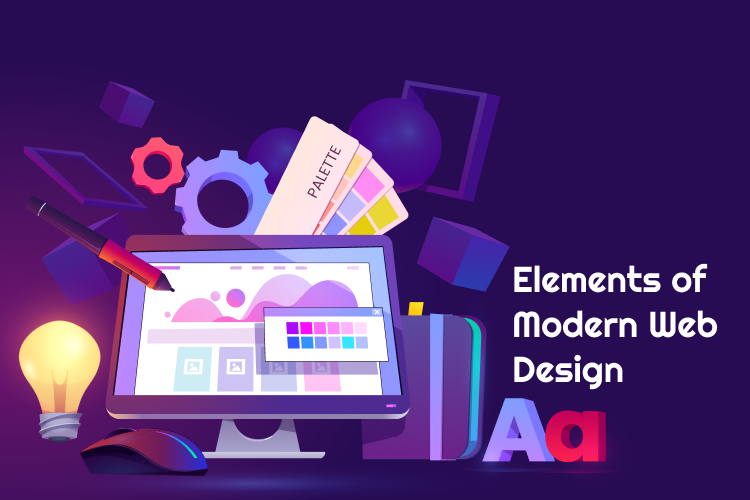With the advancement of website design, new design features have emerged that make websites look more current and interesting. The design of a website plays a vital effect in user experience, engagement, and conversion. The fundamental features of modern website design are critical in ensuring that websites suit the expectations of consumers while also staying current with design trends. In this section, we will look at the important features of modern website design and how they can affect the performance of your website.
Responsive Design And Mobile Optimization
Mobile optimization and responsive design are critical components of modern website design. As the use of mobile devices grows, it is becoming increasingly important to ensure that websites are mobile-friendly.
The capacity of a website to alter its appearance and content according to the device is responsiveness. This means that a website should appear good and be simple to use whether viewed on a desktop computer, tablet, or smartphone.
The evolution of this is mobile optimization, which ensures that a website design should give an optimal user experience on mobile devices. This includes things like touch-friendly buttons and menus, easy-to-read language, and quick load speeds.
Recent statistics show that mobile devices account for more than half of all website traffic. In fact, mobile devices account for half of global internet traffic, a figure that is likely to climb further in the future years. This means that having a mobile-friendly website is no longer a luxury, but a must.
By implementing responsive design and mobile optimization in your website, you can ensure that your site looks great and is easy to use across all devices, which can ultimately lead to better user engagement and higher conversion rates.

Simple And Clean Layouts
The usage of basic and clean layouts is one of the main modern design trends that have arisen. Unlike in the past, when flashy animations, sophisticated visuals, and information overload were prominent, the trend currently is towards minimalist design.
The use of white space and a simplified color palette directs the user’s attention to the information, making the website easier to navigate and understand. Minimalist layouts help reduce loading time, which is critical for keeping users interested in a website.
The minimalist approach is especially useful for mobile device. This is because on mobile, there is less screen space, and consumers need quick access to the most crucial information. According to a Google survey, 53% of mobile users abandon sites that take more than three seconds to load, while 74% abandon sites that take more than five seconds.
Consequently, the adoption of basic and clean layouts in modern website design not only improves user experience, it also guarantees that the website loads quickly, thereby boosting the site’s overall efficacy.

High-Quality Visuals And Multimedia
Modern website design has evolved to become more visually appealing and engaging, and high-quality visuals and multimedia have played an important role in this. Websites are no longer just text on a white background; they now include a range of multimedia features, such as photographs, videos, and animations, to provide a more immersive user experience.
One reason for this shift toward multimedia is its ability to swiftly and efficiently transmit information. Users expect to be able to discover the information they need quickly in today’s fast-paced world, and pictures are typically more effective at delivering information than text alone. According to one study, images can boost learning and retention by up to 400%.
High-quality images and multimedia are also important in establishing a brand’s identity and personality. The design of a website can influence a user’s perception of a brand, and the use of multimedia can aid in the creation of a cohesive and memorable brand image. A website with unique and eye-catching animations, for example, is more likely to be remembered than one with stock images and basic typography.
It is critical to optimize visuals and multimedia for web use to ensure that they are of the highest quality. This includes compressing photos and videos without sacrificing quality, using suitable file types, and employing responsive design. All of them guarantee that multimedia elements will present correctly on all devices.

Intuitive Navigation And User Experience
Modern website design must have intuitive navigation and a positive user experience. Users should be able to easily navigate your website and find what they are looking for with minimal effort. It’s critical to remember that the majority of website visitors are impatient and have a limited attention span. Therefore, your website should be user-friendly and intuitive.
A well-designed website should have a clear and logical structure that makes it easy for users to navigate. Navigation menus should be simple to discover and use. Additionally, they should provide visitors a clear notion of what to expect on each page. Drop-down menus, breadcrumb trails, and icons are examples of design components that provide an easy navigation experience.
Modern websites should go with the user’s wants in mind. It implies your website should be responsive and load swiftly on all devices. It should also have high accessibility, so that individuals with impairments may easily navigate and use your website.
The goal of user experience is to make your website simple and enjoyable to use. That is, functionality should take precedence over aesthetics. For example, you may be tempted to include dazzling animations or images, but if they slow down your website or make it difficult to navigate, the user experience will suffer.


2 thoughts on “The Key Elements Of Modern Website Design”